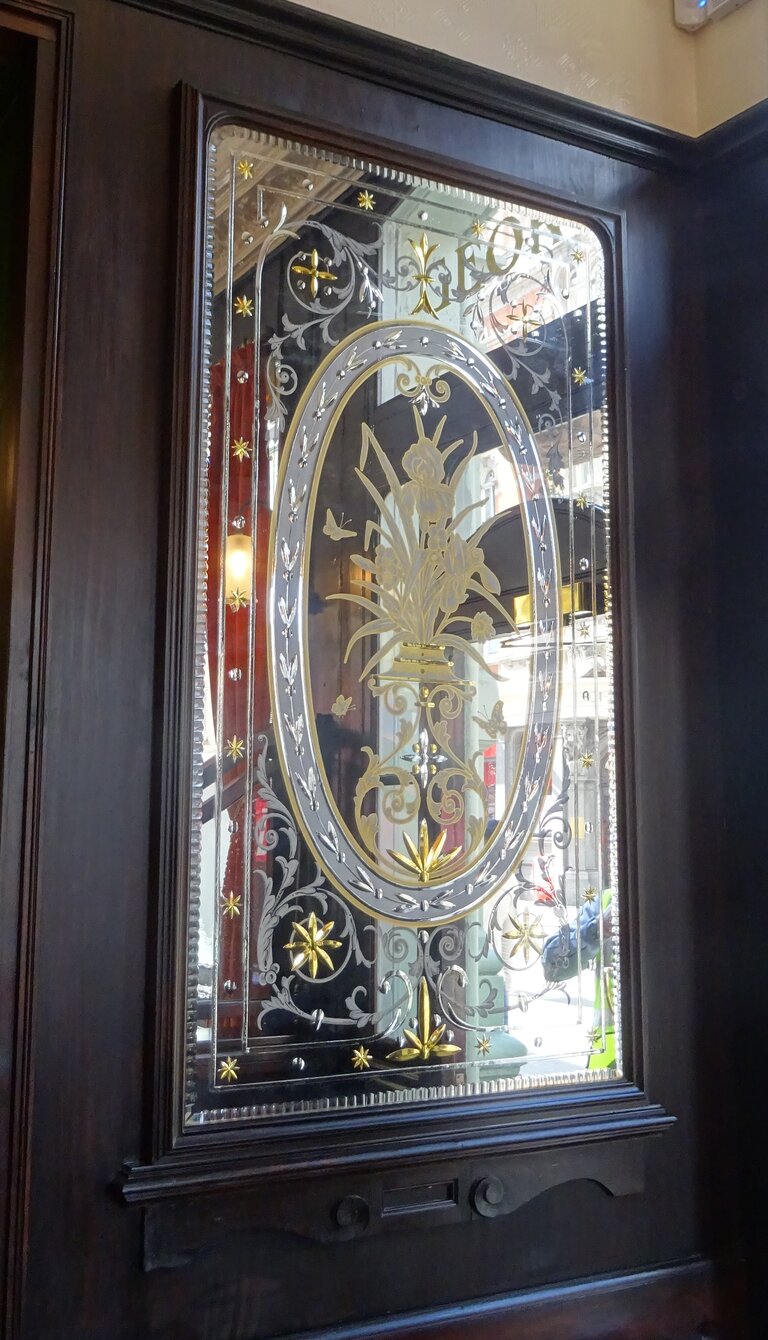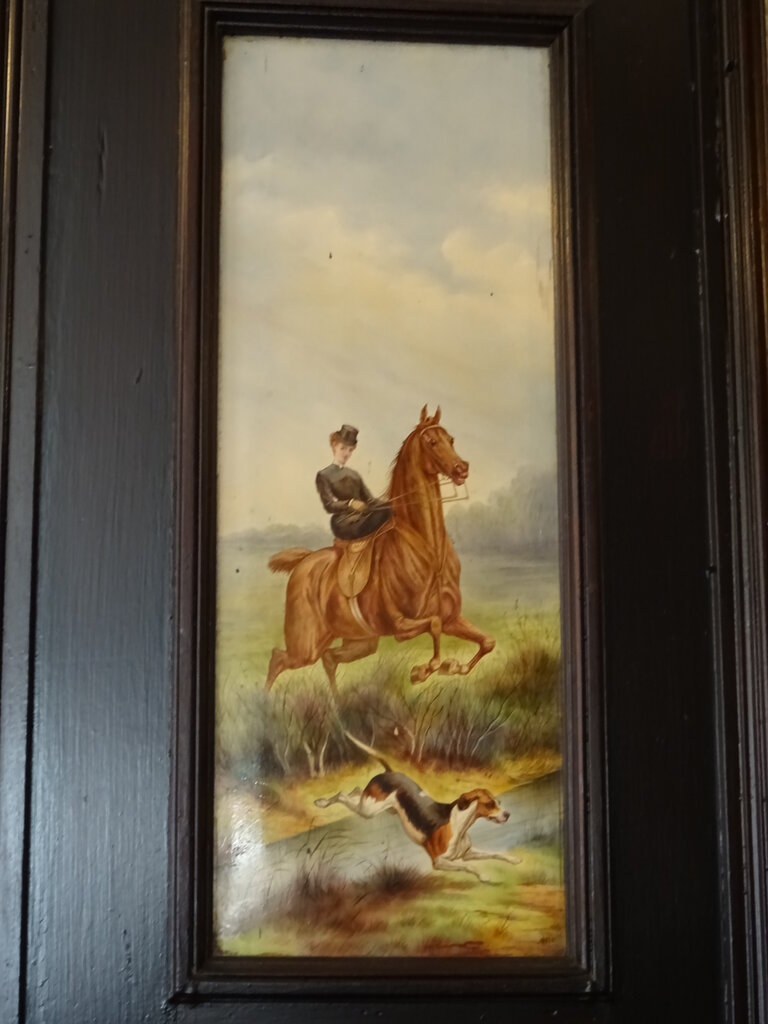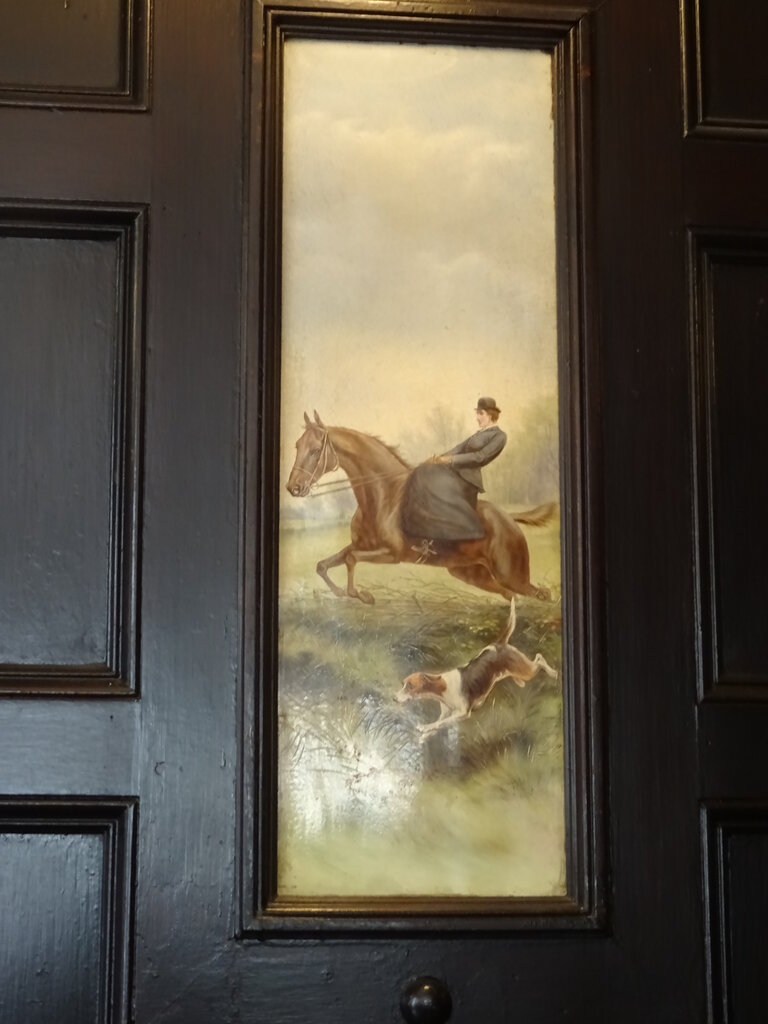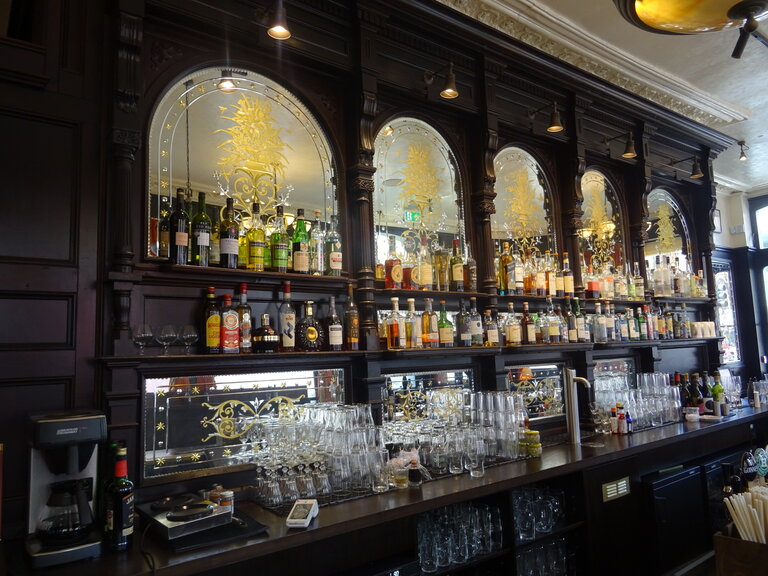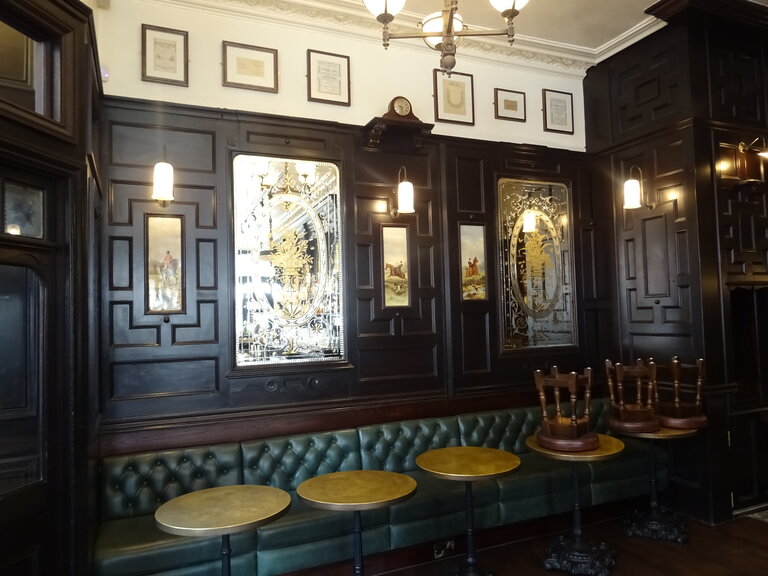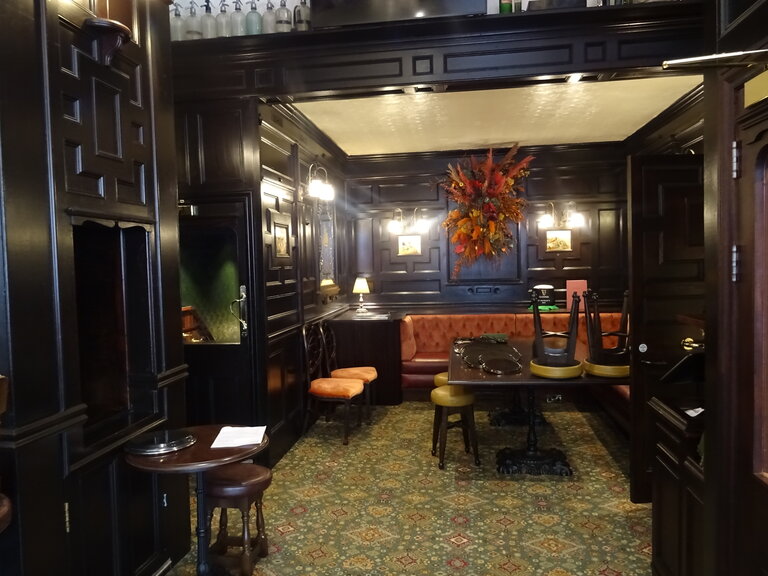George
55 Great Portland StreetFitzrovia
W1W 7LQ
This pub is not only a grade II listed building, it is also a Two Star pub on the Campaign for Real Ale’s (CAMRA) National Inventory with an interior of very special national historic interest, and the description is as follows: “This is a popular pub in the heart of Fitzrovia sitting proudly and ornately on the corner of two streets. It has now been turned into a single drinking space, yet it is still well worth a visit for its collection of surviving, excellent late-Victorian fixtures and fittings. The panelled bar counter seems original and behind it is a magnificent five-bay back-fitting with etched and gilded mirrors with the sprays of flowers and foliage that were so popular with pub fitters of the day. Yet, without doubt, the most appealing part of the pub is the left-hand side with its wood-panelled walls, more etched and gilded mirrors, and delightful ceramic panels. In the front area are three elongated panels of ladies and gents on horseback. The rear area has the air of a gentleman’s club, fully panelled to the ceiling and decorated with mirrors and tiles with beautifully realised painted hunting dogs and a stag – the pub’s patrons probably aspired to such a way of life. A sympathetic refurbishment prior to the pub's reopening in 2022 has left the heritage features unaffected. History in the area: The name Fitzrovia, believed to have been coined in the 20th century, derives from the name of the man who became Lord Southampton, the Hon. Charles Fitzroy. He developed the area in the 18th century with Fitzroy Square its splendid focus. In the 1930s and 1940s Fitzrovia was the haunt of and artists and writers, some of them working for the BBC. Among the latter was Julian Maclaren-Ross who sometimes frequented the George and immortalised the atmosphere of the area in his Memoirs of the Forties.”
The listing description is as follows: “Public house, 1860s, with largely late-C19 interior and minor later alterations including refurbishment of upper floors in 2006.
EXTERIOR: The George PH occupies a corner site comprising six windows to Mortimer Street, a single bay on the splayed corner, and two windows to Great Portland Street. The pub frontage is articulated by marble three-quarter columns with plinths and gilded Composite capitals marking the segmental-headed windows and doors and an entablature with modillion cornice. The signage and lamps are modern replacements, as are the brass fittings on the sills. The doorway terminating the elevation to Mortimer Street and the window (formerly a doorway) on the splayed corner have pediments with gilded consoles and fluted pilasters in a Jacobean style. There is further gilded plasterwork - in alternating cartouche and shell designs - in the centre of each segmental arch. An additional doorway, also with fluted pilasters and gilded consoles terminates the elevation to Great Portland Street. All the windows and the doors contain patterned, frosted glass which has been inserted into the bottom section of the panes; this may be a later addition, perhaps using glass from another Victorian public house. The upper storeys are Italianate in style. The fenestration comprises rectangular sash windows, some paired, with consoles and pediments to the first floor; round-headed gauged brick arches to the second floor and segmental-headed arches to the third. The second floor arches have plasterwork heads in the tympana and an acanthus frieze running between the imposts of the arches, a second frieze in a dogtooth design in on the third floor. The storeys are divided by moulded stringcourses and the elevations terminate in a heavy modillion cornice, above which are ornamental metal cresting, the slate Mansard roof, attic dormers and tall brick chimneys.
INTERIOR: ground floor appears to have been refurbished in the late C19, at which time the plan may have been opened up, and many features survive from this date including: a handsome back bar with classical-details such as colonettes, consoles, entablature and dentil cornice; Jacobean-style strapwork panelling; several wall mirrors with gilded cut-glass patterns (these are set into the back bar and the panelling); a mahogany bar with encaustic floor tiles; a series of painted tiles depicting hunting scenes and dogs set into the panelling; a dumb waiter (clad in more strapwork panelling); a vestibule with patterned glass; embossed ceiling; and decorative cornice. Although some of the fittings have been moved - the mirrored panels which were once in the sitting area are now behind the bar - these have been reinstated within the pub in a manner consistent with the arrangement of fittings in a late Victorian public house. This does not, therefore, detract from the special interest of the interior which is, in the main, in situ. There are two rooms on the first floor which appear to have been public rooms originally: both contain opulent marble fireplaces and cornices. Two original stairs survive. That from the ground to first floor has a timber newel post and that serving the upper floors has a metal newel post and timber turned balustrade. Upper levels have simple panelling below the windows and simple C19 timber fireplaces. HISTORY: The George dates from the 1860s and is first shown as a public house on the Ordnance Survey map of 1875. The building has been through a few refurbishments, some major, such as the insertion of a series of decorative glass panels and panelling in the late C19 and others more modest, such as its restoration after a fire in the upper floors in 2006. The site occupied by the George was developed in the first decades of the C18 by the Portland Estate. The site would have originally contained a typical Georgian terraced house, perhaps with a ground floor shop, which was presumably demolished to make way for the George, possibly upon the expiry of a ground-lease. It is not known if the original name of the pub was The George. Although it was certainly known by this name by 1910 (when it is recorded as such in a Street Directory), the painted tiles depicting riders and hounds suggest it might have had a name associated with hunting when it originally opened.
REASONS FOR DESIGNATION DECISION: The George Public House is listed at Grade II for the following principal reasons * it has special architectural interest for its characterful, Italianate façade of the 1860s and a ground floor frontage with greater ornamentation than is typical of a mid-C19 public house; * the building has strong streetscape qualities and the architect or builder has utilised the advantage of a corner site; * the interior has special interest in equal measure for its survival of ornate original features including glasswork, panelling, and painted tiles depicting riders and dogs.”
The George was used by Julian Maclaren-Ross to meet his BBC contacts.
The CAMRA website Link is here: CAMRA/George
The George featured on the Evening Crawl of Marylebone on 19 April 2006, the Auntie's Boozers: Evening Crawl of Fitzrovia and East Marylebone on 10 December 2008, and the Auntie's Boozers Revisited: Evening Pub Tour of Fitzrovia on 13 April 2022.

